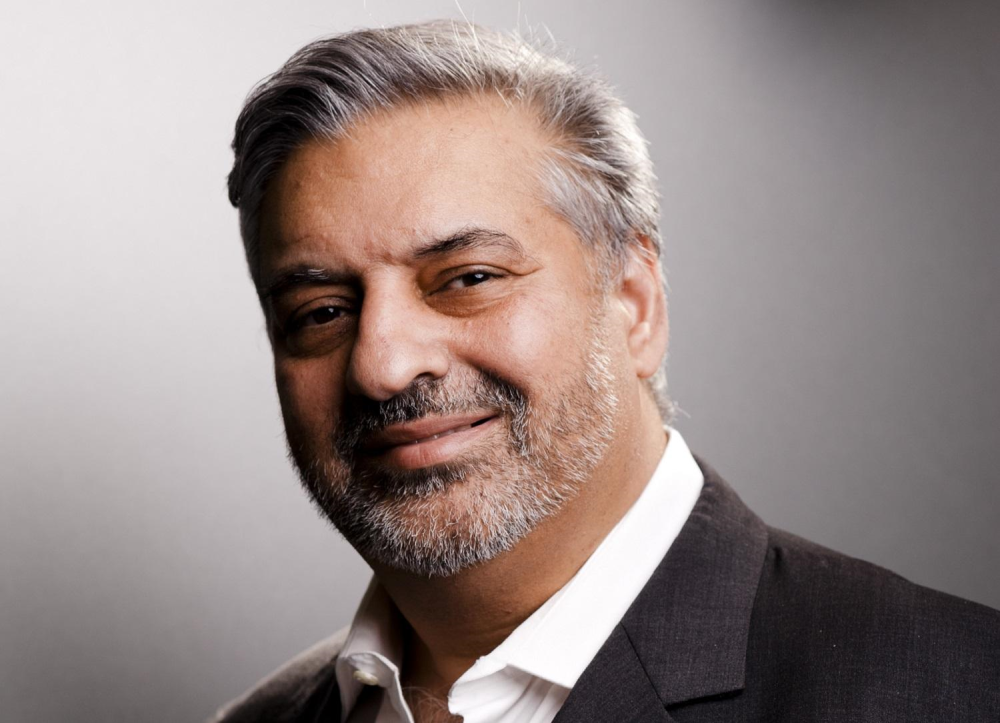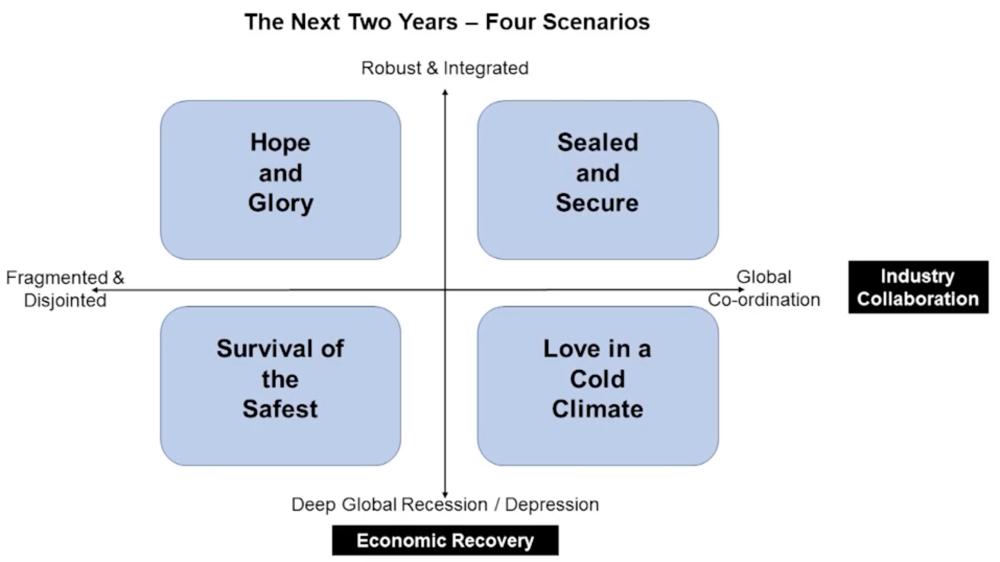Four ways out of COVID-19 for the industry

Rohit Talwar, Chief Executive Officer, Fast Future
During the COVID-19 segment of the April 29 FlightPlan broadcast, hosted by Inmarsat and Airline Passenger Experience Association (APEX), Fast Future Chief Executive Officer Rohit Talwar revealed the findings of the first installment of a four-part joint-study by the research and insights specialist, Future Travel Experience (FTE) and APEX on possible COVID-19 outcomes for travel sector.
Fast Future is a research, insights, consulting and executive education business that specializes in the fields of futures and foresight.
The study is titled Safety, Trust, and Innovations Critical To Air Transport Sector Revival. Talwar discussed part one of the study, ‘COVID-19 Air Transport Near Term Impacts and Scenarios.’ He explains what the findings reveal about the impact of the pandemic on passenger volumes and investment strategies, and runs through four possible scenarios that could unfold in the future.
Conducted March 17, 2020 to April 17, 2020, the global study received 269 survey respondents in 47 countries. The four largest groups to respond were airlines (19 percent), airports (17 percent), industry consultants, analyst and service providers (16 percent), and information technology and communications suppliers (14 percent). The remaining 35 percent of responses came from other players across the industry.
To start, Talwar provided the results from stakeholder predictions on passenger volumes and investment strategies, which are also available online. He explained that over the next two years, 68.4 percent of respondents see investment in digital transformation increasing and 60.3 percent expect investment in automation and the deployment of artificial intelligence (AI) technology to rise. When it comes to innovation, 54.2 percent expect investment to increase, while 48.5 percent expect a rise in customer experience and service spending, with less than a quarter expecting investment in this area to fall.
Which way is up?

Fast Future developed four scenarios for how the industry might emerge from the pandemic over the next two years. The scenarios explore the possible interaction of government policy, health factors, passenger confidence, economic recovery and industry collaboration. The latter two are what Talwar called driving forces on each axis.
The four scenarios are titled: Survival of the Safest, Hope and Glory, Sealed and Secure and Love in a Cold Climate.
Survival of the Safest
This potential scenario incorporates fragmented and disjointed industry collaboration and a deep global recession/depression. Here, Talwar says the industry stands to see some airlines failing and airports closing down. The surviving airlines and airports will have strong end-to-end safety measures that can show passengers that they will not be at risk while traveling, Talwar said.
Hope and Glory
Here, there is economic recovery but the industry does not coordinate. As Talwar put it, hope is used a strategy in this scenario. Players that do the best managing the entire chain and work with key partners are the ones who receive glory and see numbers similar to those that were seen at the end of 2019, he added.
Love in a Cold Climate
In this scenario, the industry collaborates well for global coordination, but the economy doesn’t recuperate. “We get our act together, but don’t see the benefit economically,” Talwar explained.
Sealed and Secure
In this fourth scenario, there is both economic recovery and collaboration between industry players by following similar protocols worldwide.
“This is one where the industry is really stepping up, showing leadership in corralling industry associations and other related sectors to take an approach to government and say, ‘Work with us on this so that we can get travel going because it’s such an important motor of the economy,’” Talwar said.
He added that a Sealed and Secure model could include testing for antibodies and vaccination with travelers providing a qualifying certificate. In the airport, there could be three zones to keep people with same-certificates confined to designated spaces. This would be carried all the way through the travel experience so that there would be almost zero risk to passenger, Talwar said. This requires partnership with transport providers at all ends of passenger travel, as well as at convention centers and passenger destinations. And, it would be up to the passenger to take responsibility to meet only same-certified people.
“In the face of that, we really have to make sure that the industry is demonstrating that it is truly secure and that for the leisure passenger, it can ensure a safe and secure experience, end-to-end, not just in the airport and on the airline, but actually for your entire travel journey,” Talwar said.

